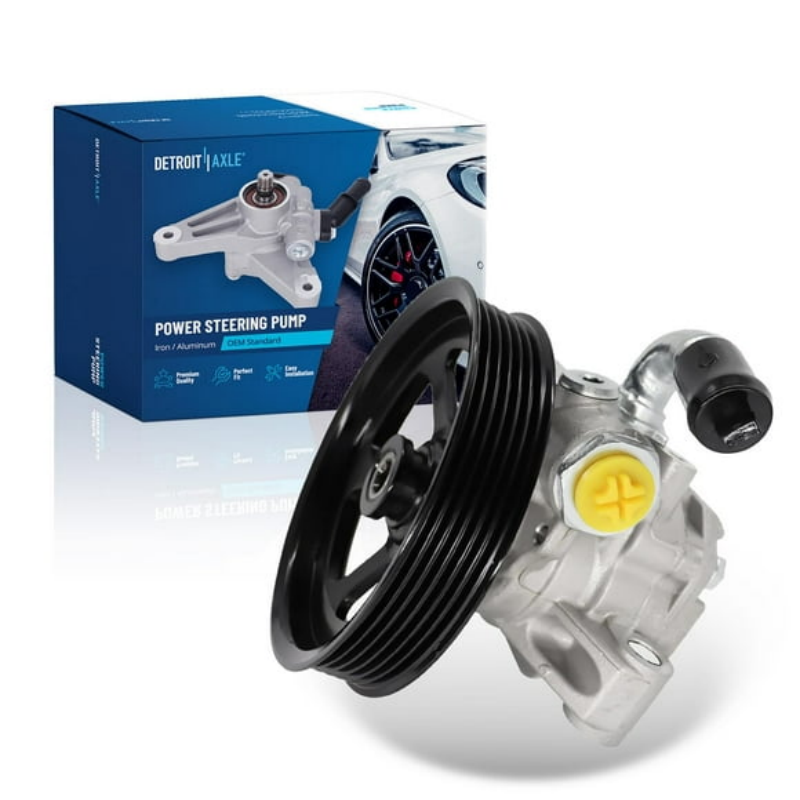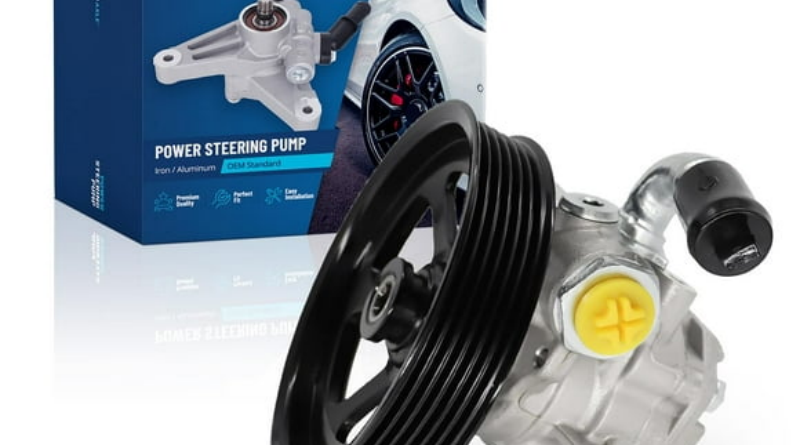Understanding Power Steering Belt Replacement Cost: A Guide
When it comes to vehicle maintenance, the power steering system is one of the most vital components affecting overall driving experience. Not only does it make steering easier, but it also plays a crucial role in the vehicle’s performance and safety. One integral part of this system is the power steering belt, which runs the pump that assists in steering efforts. Over time, this belt can wear out, leading to various symptoms such as difficulty in steering, unusual noises, and even steering failure. Therefore, understanding the factors affecting power steering belt replacement cost is essential for any car owner. In this article, we will delve into everything you need to know about power steering belt replacement, including costs, DIY options, and the importance of timely replacement.

What Is a Power Steering Belt?
The power steering belt is a crucial component that connects the engine to the power steering pump. The primary function of this belt is to transmit power from the engine to the pump, allowing it to circulate power steering fluid through the system. This fluid is what assists the driver in making steering maneuvers easier, especially in larger vehicles or at lower speeds. Without a functioning power steering belt, the entire power steering system may become inoperable, leading to increased effort required to turn the steering wheel and potentially causing further damage to the vehicle.
Signs That You Need a Power Steering Belt Replacement
One of the best ways to prevent a complete power steering failure is by recognizing the warning signs that indicate the need for power steering belt replacement. Keep an eye out for these common symptoms:
- Squealing Noises: A frequent warning sign of a worn-out belt is a high-pitched squeal when turning the steering wheel. This noise occurs due to friction between the belt and the pulleys.
- Stiff Steering: If you notice that your steering wheel has become excessively stiff, it may indicate that the power steering pump is not functioning properly due to a deteriorating belt.
- Power Steering Fluid Leaks: A leaking power steering fluid reservoir can lead to a decrease in fluid levels, which may cause the power steering pump to work harder than usual, leading to belt wear.
- Warnings on Dashboard: On some modern vehicles, dashboard warning lights can indicate a problem within the power steering system, prompting a closer inspection.
Recognizing these signs early and having the belt inspected can save you from more extensive damage and higher replacement costs.
Factors Affecting Power Steering Belt Replacement Cost
Several factors can significantly impact the total cost of replacing a power steering belt. Understanding these variables can help you make an informed decision when it comes time for replacement.
- Labor Costs: The labor cost can fluctuate based on your geographical location and the repair shop’s reputation. Urban areas typically have higher labor rates compared to rural settings.
- Parts Quality: Not all replacement belts are created equal. You can find OEM (original equipment manufacturer) parts, which are generally more expensive, or aftermarket parts, which may be more affordable but could vary in quality.
- Vehicle Type and Make: Different makes and models of vehicles have different specifications for power steering belts. Some vehicles may require more labor-intensive methods for replacement, affecting the total cost.
- Additional Repairs: If your power steering belt is worn, other surrounding components may also need attention. For instance, if the power steering pump or the tensioner is failing, they may need to be replaced simultaneously, increasing the overall cost.

Average Costs for Power Steering Belt Replacement
To provide an estimate of the typical costs associated with power steering belt replacement, it’s essential to consider both the cost of parts and labor. On average, the total cost for replacing a power steering belt can range from $150 to $500. This range depends on the factors highlighted previously.
- Parts Cost: The price for a power steering belt may vary, but on average, you can expect to pay between $30 and $100 for the belt itself.
- Labor Cost: Labor costs will vary based on your location, but generally, you can expect to pay between $70 and $150 per hour. The replacement procedure usually takes one to two hours, depending on your vehicle’s design.
Breaking down the costs can help you anticipate expenses and budget accordingly.
DIY Power Steering Belt Replacement: Is It Worth It?
For those who are incline to perform vehicle maintenance themselves, replacing the power steering belt can be a feasible DIY project, provided you have the right tools and know-how. On one hand, switching to a DIY approach can lead to considerable savings; on the other, it can come with potential drawbacks.
Tools Required
- Socket Wrench Set: Essential for removing bolts.
- Torque Wrench: Necessary for ensuring bolts are tightene to the manufacturer’s specifications.
- Screwdrivers: Phillips and flathead screwdrivers may be required to navigate through various components.
- Replacement Belt: Make sure to have the correct belt for your vehicle make and model.
Steps to Replace
- Preparation: Make sure the vehicle is on a stable, flat surface, and the ignition is off. Disconnect the battery to ensure safety.
- Remove the Old Belt: Access the power steering pump, and carefully remove the belt using your socket wrench.
- Inspect Associated Parts: Check the condition of the power steering pump and tensioner. If any other parts seem damaged, you may need to replace them as well.
- Install the New Belt: Fit the new belt onto the pulleys, ensuring it’s properly aligned.
- Reconnect Everything: After confirming everything is adequately fitted, reconnect the battery, and check for any leaks in the power steering system.
While replacing the belt independently does come with savings, ensure you have a solid understanding of your vehicle’s anatomy before diving into a DIY project. Incorrect installation can cause additional problems that may outweigh potential savings.

Long-Term Benefits of Replacing Your Power Steering Belt Promptly
Acting promptly on signs of wear can save you time and money in the long run. Here are some benefits of timely power steering belt replacement:
- Improved Steering Performance: A new belt will restore ease of steering, allowing for better control over your vehicle.
- Preventing Further Damage: Driving with a failing belt can cause damage to other components, such as the power steering pump or alternator, leading to a more significant repair cost.
- Enhanced Vehicle Safety: Faulty steering can lead to dangerous situations on the road. Ensuring your power steering system is in good working order minimizes risks.
- Increased Longevity of Components: Regular maintenance and timely replacement of worn parts extend the lifecycle of your overall vehicle system.
Taking a proactive stance on maintenance not only gives you peace of mind but also helps in maintaining your vehicle’s value.
Conclusion
Understanding the power steering belt replacement cost is crucial for any vehicle owner aiming to maintain their vehicle’s performance and safety. With an average cost ranging between $150 and $500, several factors can influence the total expense associated with replacements, including labor, parts quality, and additional repairs. Whether you opt for a DIY approach or professional help, the key is timely replacement to avoid further complications. By monitoring your vehicle for early warning signs and understanding the costs involved, you can enjoy a smoother, safer driving experience. Proper care not only enhances vehicle performance but also prolongs its life, ensuring it remains a dependable mode of transportation for years to come.
